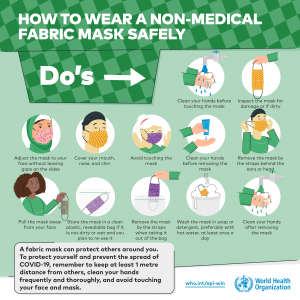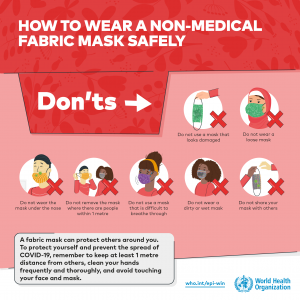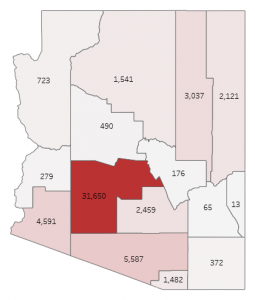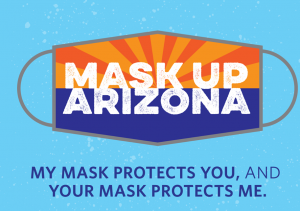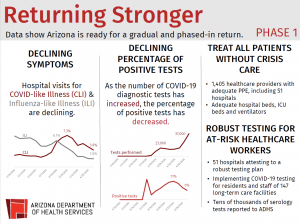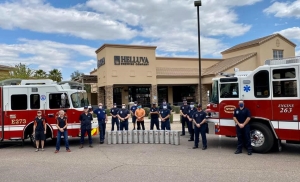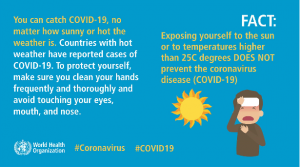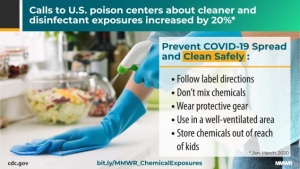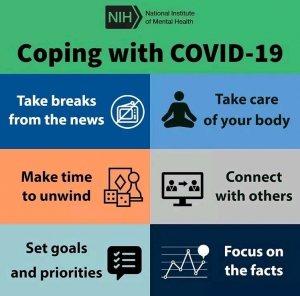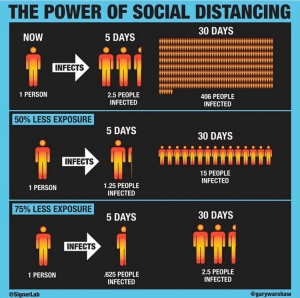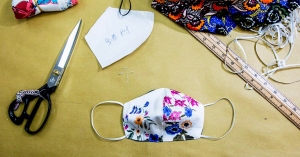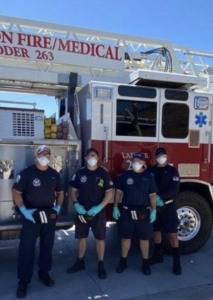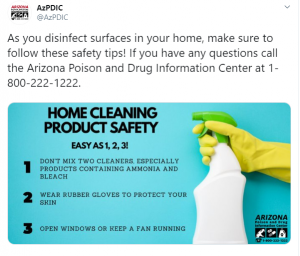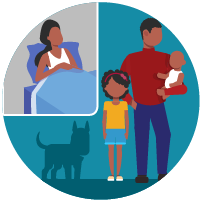COVID-19 UPDATES
Map courtesy of Johns Hopkins Center for Systems Science and Engineering
Resources
COVID-19 VACCINE
Maricopa County Public Health
COVID-19 VACCINE STATUS UPDATE:
-
No COVID-19 vaccine is currently FDA-approved. We are currently planning and preparing for upcoming vaccine with state and local partners.
-
Safety is a top-priority in delivering a vaccine.The FDA Vaccines and Related Biological Products Advisory Committee will gather Dec. 10 to discuss Pfizer’s EUA application for its COVID-19 vaccine. If approved, initial shipments of the vaccine to states for distribution to prioritized groups could begin as soon as mid-December. Moderna applied for EUA to the FDA Nov. 30th. The FDA has scheduled its review for Dec. 17th.
-
Supply will be limited at first and vaccine will be prioritized.Once vaccine is authorized for use by the FDA, distribution will go to healthcare workers (includes EMS) and long-term care facility staff & residents, per CDC ACIP recommendations for Phase 1a.
-
Additional federal guidance for prioritization for vaccination beyond Phase 1a are expected in the coming weeks. Once those recommendations have been made and more is known about vaccine availability, state and local health officials will be able to determine the most effective and equitable way to provide vaccinations to other prioritized groups.
https://www.maricopa.gov/5641/COVID-19-Vaccine
The Corona-virus is continuing to spread across Arizona and much of our Country, and many hospitals are reaching capacity.
It is still absolutely important protect yourself and others by wearing a mask and maintaining social distancing. Please stay aware of the latest information related to this pandemic!
.
How to wear a non-medical fabric mask safely:
.
Potential Indirect Effects of the COVID-19 Pandemic
Summary of findings:
What is already known about this topic?
National syndromic surveillance data suggest a decline in emergency department (ED) visits during the COVID-19 pandemic.
What is added by this report?
In the 10 weeks following declaration of the COVID-19 national emergency, ED visits declined 23% for heart attack, 20% for stroke, and 10% for hyperglycemic crisis.
What are the implications for public health practice?
Persons experiencing chest pain, loss of motor function, altered mental status, or other life-threatening issues should seek immediate emergency care, regardless of the pandemic. Communication from public health and health care professionals should reinforce the importance of timely care for acute health conditions and assure the public that EDs are implementing infection prevention and control guidelines to ensure the safety of patients and health care personnel.
To read the entire article, open the link below:
https://www.cdc.gov/mmwr/volumes/69/wr/mm6925e2.htm
CDC
Covid-19 AZ Status Update *CRITICAL*
Arizona has become one of the COVID-19 hot spots since the Stay at Home orders were lifted in mid-May. New cases have resin and hospitals could reach capacity in few weeks. Persons should protect themselves at all times, and especially when in the public. It is still very important to wear a mask and to ad-hear to social distancing at all times.
U.S.News
-
Total number of cases are 54, 586 state wide.
-
On Friday, June 19th AZ hit a daily new-case recorded of 3,246.
-
Total number of deaths from COVID are 1,342
AZDHS 6-22-2020
MaskUpAZ
As Arizona re-opens, COVID-19 remains the same viral threat that it has been all along. We admittedly have much to learn about the novel coronavirus, but its highly transmissible nature is well-documented.
Re-opening means more, and more variations of, people mixing together than before. More mixing of people creates more potential for the virus to spread. We are already seeing a significant upward trend in new infections since the re-opening of services.
Based on what we know today, the rallying cry is clear: MaskUpAZ. Do it for yourself. Do it for others. Do it for all Arizonans. The more that COVID-19 spreads, the more impact we will share as a state: socially, economically, in terms of healthcare, and in terms of overall health and well-being.
Remember it this way: my mask protects you, your mask protects me.
https://www.facebook.com/VitalystHealthAZ/
Vitalyst Health Foundation <info@vitalysthealth.org></info@vitalysthealth.org>
Because cloth face coverings are new to many people, there are lots of questions about the right way to wear them.
Here are some tips: right way to wear them.
- Wear the cloth face covering in public, regardless of whether you feel sick or not. This way you’re protecting yourself, your family, and others in the event you are infected and don’t have any symptoms.
- Wear the cloth face covering snugly (but comfortably) over your nose and mouth. Don’t let the mask sit under your nose. If it gapes open, it’s not doing its job. If it hurts your ears, try one that ties behind your head instead of looping over your ears.
- Wear the cloth face covering without touching it. Keep it on, over your mouth and nose, when speaking with others or when on the phone. Try not to adjust your mask too much, and refrain from pulling on or touching the front of your mask. Avoid reaching under your mask for an itch. If you need to remove or readjust your mask, do it by touching the ear loops or ties. Always wash or sanitize your hands after touching your mask.
- Wear the cloth face covering if you’re old enough to take it on and off yourself. The CDC recommends not placing these on children under 2 years old.
- Wear the cloth face covering in public until you need to eat or drink, then make sure to keep it clean and uncontaminated. If you need to eat or drink in public, make sure you are more than 6 feet from others and then remove the mask and place it in a clean paper bag, container, or on a designated surface (like a new piece of paper on the far side of your desk). Make sure you wash or sanitize your hands before eating. After putting your mask on again, make sure you wash or sanitize your hands. Wash your mask after each day’s use and store it in a clean bag or container.
We all have a role in preventing the spread of COVID-19. Wearing a cloth face covering is one thing you can do to keep your family, co-workers, and community safe.
source: https://azdhs.gov/
Governor Doug Ducey ended the Stay at Home order in Arizona on May 15.
Read the full news release at https://azgovernor.gov/governor/news/2020/05/governor-ducey-announces-next-phase-arizona-recovery
.
Data shows AZ is ready for a gradual and phased-in return (AZ DHS)
Governor Doug Ducey Extends Stay at Home Order
April 29, 2020
PHOENIX — Governor Doug Ducey today announced an extension of physical distancing measures while laying out a step-by-step approach to continue re energizing Arizona’s economy. The Governor today issued an Executive Order extending Arizona’s Stay Home, Stay Healthy, Stay Connected Order until May 15, 2020.
The order also continues Arizona’s gradual economic reopening, allowing retail businesses to begin partial operations starting next week. Under the order, retail businesses currently not operating can begin curbside pick-up on Monday, May 4, followed by expanded in-person operations on Friday, May 8 as long as they implement social distancing and sanitation measures established by the United States Department of Labor or the Arizona Department of Health Services.
View Executive Order https://azgovernor.gov/sites/default/files/eo_2020-33_0.pdf
The SFMD offers a huge THANK YOU to Helluva Brewing of Chandler and Adventurous Stills of Tempe for their generous donation of Hand Sanitizer! The two breweries teamed up to create the sanitizer, which has been donated to the SFMD and the Tempe Fire & Medical Department. Hand sanitizer is a commodity right now because of the Pandemic, and First Responders have a significant need for it. These two Brewing Companies have greatly supported First Responders and their local communities today, and it is very much appreciated.
Should cloth face coverings be washed or otherwise cleaned regularly? How regularly?
Should cloth face coverings be washed or otherwise cleaned regularly? How regularly?
Yes. They should be routinely washed depending on the frequency of use.
How does one safely sterilize/clean a cloth face covering?
A washing machine should suffice in properly washing a face covering.
How does one safely remove a used cloth face covering?
Individuals should be careful not to touch their eyes, nose, and mouth when removing their face covering and wash hands immediately after removing.
Coronavirus is not the flu. It’s worse. – YouTube youtu.be
https://youtu.be/FVIGhz3uwuQ
Coronavirus Disease 2019
There is an ongoing outbreak of respiratory illness caused by a new type of coronavirus (SARS-CoV-2). There are a number of cases globally including the United States. On February 26th, the CDC confirmed a possible instance of community spread in the United States.
Coronaviruses are a large family of viruses, some causing respiratory illness in people. Signs and symptoms, similar to the common cold or the flu, include a runny nose, cough, sore throat, fever, and general feeling of being unwell.
For the most up-to-date information on the outbreak, please visit the CDC’s COVID-19 website.
Source: The Arizona Department of Health Service
To prevent the spread of COVID-19 please follow these recommendations:
- Wash your hands often with soap and water for at least 20 seconds. If soap and water is not readily available, use an alcohol-based hand sanitizer.
- Avoid touching your eyes, nose and mouth
- Avoid close contact with people who are sick
- Stay home when you are sick.
- Cover your cough or sneeze with a tissue, then throw the tissue in the trash.
- Clean and disinfect frequently-touched objects and surfaces like door knobs, light switches, and electronic devices using a regular household cleaning spray or wipe.
For the most up-to-date information on the outbreak, please visit these websites:
- Pinal County Public Health
- Maricopa County – Coronavirus
- State of Arizona – Department of Health and Safety
- Center for Disease Control – Coronavirus
Beware of criminals pretending to be WHO
Hackers and cyber scammers are taking advantage of the coronavirus disease (COVID-19) pandemic by sending fraudulent email and WhatsApp messages that attempt to trick you into clicking on malicious links or opening attachments.
These actions can reveal your user name and password, which can be used to steal money or sensitive information. If you are contacted by a person or organization that appears to be WHO, verify their authenticity before responding.
The World Health Organization will:
- never ask for your username or password to access safety information
- never email attachments you didn’t ask for
- never ask you to visit a link outside of www.who.int
- never charge money to apply for a job, register for a conference, or reserve a hotel
- never conduct lotteries or offer prizes, grants, certificates or funding through email.
The only call for donations WHO has issued is the COVID-19 Solidarity Response Fund, which is linked to below. Any other appeal for funding or donations that appears to be from WHO is a scam.
Beware that criminals use email, websites, phone calls, text messages, and even fax messages for their scams.
You can verify if communication is legit by contacting WHO directly.
source: World Health Organization (WHO) https://www.who.int/
Basic protective measures against the coronavirus
Stay aware of the latest information on the COVID-19 outbreak, available on the WHO website and through your national and local public health authority. Most people who become infected experience mild illness and recover, but it can be more severe for others. Take care of your health and protect others by doing the following:
Wash your hands frequently
Regularly and thoroughly clean your hands with an alcohol-based hand rub or wash them with soap and water.
Why? Washing your hands with soap and water or using alcohol-based hand rub kills viruses that may be on your hands.
Maintain social distancing
Maintain at least 3 feet distance between yourself and anyone who is coughing or sneezing.
Why? When someone coughs or sneezes they spray small liquid droplets from their nose or mouth which may contain virus. If you are too close, you can breathe in the droplets, including the COVID-19 virus if the person coughing has the disease.
Avoid touching eyes, nose and mouth
Why? Hands touch many surfaces and can pick up viruses. Once contaminated, hands can transfer the virus to your eyes, nose or mouth. From there, the virus can enter your body and can make you sick.
Practice respiratory hygiene
Make sure you, and the people around you, follow good respiratory hygiene. This means covering your mouth and nose with your bent elbow or tissue when you cough or sneeze. Then dispose of the used tissue immediately.
Why? Droplets spread virus. By following good respiratory hygiene you protect the people around you from viruses such as cold, flu and COVID-19.
If you have fever, cough and difficulty breathing, seek medical care early
Stay home if you feel unwell. If you have a fever, cough and difficulty breathing, seek medical attention and call in advance. Follow the directions of your local health authority.
Why? National and local authorities will have the most up to date information on the situation in your area. Calling in advance will allow your health care provider to quickly direct you to the right health facility. This will also protect you and help prevent spread of viruses and other infections.
Stay informed and follow advice given by your healthcare provider
Stay informed on the latest developments about COVID-19. Follow advice given by your healthcare provider, your national and local public health authority or your employer on how to protect yourself and others from COVID-19.
Why? National and local authorities will have the most up to date information on whether COVID-19 is spreading in your area. They are best placed to advise on what people in your area should be doing to protect themselves.
source: the World Health Organization (WHO)
The CDC Now Recommends Americans Wear Face Masks
Staying home is still the best way to protect yourself from the coronavirus. But the CDC now says that masks are effective as an additional measure. Citizens should wear “non-medical, cloth masks” to help prevent the spread of the coronavirus.
ADDED PRECAUTION !
Due to the current COVID-19 pandemic you will see SFMD crews wearing added levels of Personal Protective Equipment (PPE). These precautions assure the highest levels of protection for our citizens and for our First Responders.
Below is the most recent recommendations provided by the Arizona Department of Health Service:
Updated Recommendations – 3/30/2020
- Effective close of business Tuesday, March 31, Arizonans shall limit their time away from their place of residence or property, except:
- To conduct or participate in essential activities, and/or;
- For employment, to volunteer or participate in essential functions; or
- To utilize any services or products provided by essential business services;
- And for employment if as a sole proprietor or family owned business, work is conducted in a separate office space from your home and the business is not open to serve the public.
- Essential businesses that remain open shall implement rules and procedures that facilitate physical distancing and spacing of individuals of at least 6 feet.
- Businesses, operations, and activities deemed essential by the state were clarified here.
- Arizonans are encouraged to improve social connectedness, resiliency, and help-seeking behavior.
- Arizona schools state-wide are closed through the end of the school year.
- All restaurants are required to provide dine-out options only.
- All bars, movie theaters, and gyms are required to close.
- All elective surgeries are halted in the state of Arizona.
- If someone in your family has tested positive for COVID-19, keep the entire household at home and contact your medical provider.
- All mass gatherings of 10 or more people must be canceled or postponed.
The below map, provided by AZDHS, displays the current number of COVID-19 cases in each Arizona County.
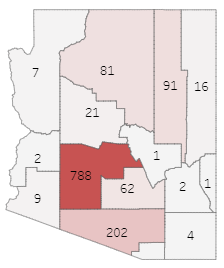
source: https://azdhs.gov/
Governor Doug Ducey orders Arizona to Stay-at-Home to help reduce the spread of the coronavirus.
The order will take effect as of 5 p.m. tomorrow, March 31st and will remain in effect through April 30th. For the full story, or to view the Executive Order please go to: https://www.12news.com/article/news/health/coronavirus/arizona-shelter-in-place-order-ducey/75-fc2b364a-c0e8-45df-87ae-02cba1c8bb1c
Source: 12News
Social distancing to control COVID-19 spread:
Action items for public safety
Social distancing is the newest element for individual and organizational infection control plans and is receiving widespread attention as COVID-19 – declared a pandemic by The World Health Organization on Mar. 11, 2020 – continues its spread across the U.S. The Centers for Disease Control and Prevention defines social distancing as “remaining out of congregate settings, avoiding mass gatherings and maintaining distance (approximately 6 feet or 2 meters) from others when possible.” Social distancing accepts or acknowledges that the coronavirus is likely widespread, community transmission is already occurring and the number of diagnosed cases is going to rise as more people receive testing. Social distancing, along with other risk reduction methods, attempts to slow the spread of COVID-19 and reduce the speed of new diagnoses, especially severe cases, in need of prehospital and in-hospital care.
COVID-19, according to the CDC, is mainly spread from person to person between people who are in close contact with one another (within about 6 feet) and through respiratory droplets produced when an infected person coughs or sneezes.
Containment through border closings, transportation restrictions and quarantining sick or exposed individuals will be increasingly ineffective given the growing number of new cases attributed to community-acquired transmission. Nonetheless, the basics of preventing virus transmission remain the same:
- Frequent handwashing with soap and water (hand sanitizer if soap and water are unavailable)
- Don’t touch your face (easier said than done!)
- Catch your cough or sneeze in the crook of your elbow
- Stay home from school or work if you are sick
COMMUNITY SOCIAL DISTANCING ACTIONS
The CDC also states, “The virus that causes COVID-19 seems to be spreading easily and sustainably in the community,” which is prompting the cancellation or reduction of events and opportunities for people to congregate together. Specifically, those social distancing actions include:
- Closing daycares, schools and college campuses
- Canceling concerts, parades and sporting events
- Canceling conferences or offering a virtual alternative
- Canceling church services
- Ordering employees to work from home
- Changing hours or available services at government buildings, like libraries
When people do need to be together in a workplace, school, church or public venue, experts recommend staying at least six feet apart, not exchanging handshakes or high fives, minimizing contact with any surfaces, as well as the standard precautions of handwashing.
What To Do if You Are Sick
If you have a fever or cough, you might have COVID-19. Most people have mild illness and are able to recover at home. Keep track of your symptoms. If you have an emergency warning sign (including trouble breathing), get medical attention right away.
Steps to help prevent the spread of COVID-19 if you are sick
Follow the steps below: If you are sick with COVID-19 or think you might have COVID-19, follow the steps below to care for yourself and to help protect other people in your home and community.
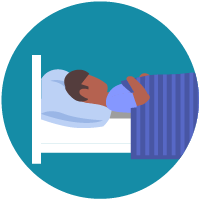
Stay home except to get medical care
- Stay home: Most people with COVID-19 have mild illness and are able to recover at home without medical care. Do not leave your home, except to get medical care. Do not visit public areas.
- Stay in touch with your doctor: Call before you get medical care. Be sure to get care if you have trouble breathing, or have any other emergency warning signs, or if you think it is an emergency.
- Avoid public transportation: Avoid using public transportation, ride-sharing, or taxis.
Separate yourself from other people in your home, this is known as home isolation
- Stay away from others: As much as possible, you stay away from others. You should stay in a specific “sick room” if possible, and away from other people in your home. Use a separate bathroom, if available.
- See COVID-19 and Animals if you have questions about pets.
If someone in your home is sick
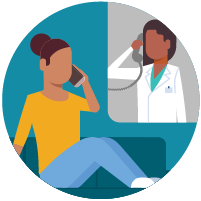
Call ahead before visiting your doctor
- Call ahead: Many medical visits for routine care are being postponed or done by phone or telemedicine.
- If you have a medical appointment that cannot be postponed, call your doctor’s office, and tell them you have or may have COVID-19. This will help the office protect themselves and other patients.
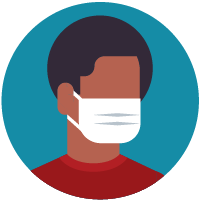
If you are sick wear a facemask in the following situations, if available.
- If you are sick: You should wear a facemask, if available, when you are around other people (including before you enter a healthcare provider’s office).
- If you are caring for others: If the person who is sick is not able to wear a facemask (for example, because it causes trouble breathing), then as their caregiver, you should wear a facemask when in the same room with them. Visitors, other than caregivers, are not recommended.
- Note: During a public health emergency, facemasks may be reserved for healthcare workers. You may need to improvise a facemask using a scarf or bandana.
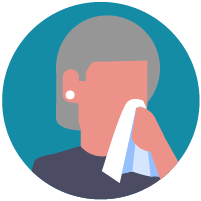
Cover your coughs and sneezes
- Cover: Cover your mouth and nose with a tissue when you cough or sneeze.
- Dispose: Throw used tissues in a lined trash can.
- Wash hands: Immediately wash your hands with soap and water for at least 20 seconds. If soap and water are not available, clean your hands with an alcohol-based hand sanitizer that contains at least 60% alcohol.
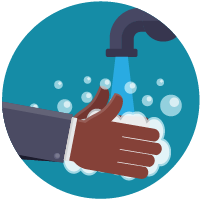
Clean your hands often
- Wash hands: Wash your hands often with soap and water for at least 20 seconds. This is especially important after blowing your nose, coughing, or sneezing; going to the bathroom; and before eating or preparing food.
- Hand sanitizer: If soap and water are not available, use an alcohol-based hand sanitizer with at least 60% alcohol, covering all surfaces of your hands and rubbing them together until they feel dry.
- Soap and water: Soap and water are the best option, especially if hands are visibly dirty.
- Avoid touching: Avoid touching your eyes, nose, and mouth with unwashed hands.
Handwashing tips
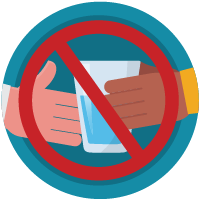
Avoid sharing personal household items
- Do not share: Do not share dishes, drinking glasses, cups, eating utensils, towels, or bedding with other people in your home.
- Wash thoroughly after use: After using these items, wash them thoroughly with soap and water or put in the dishwasher.
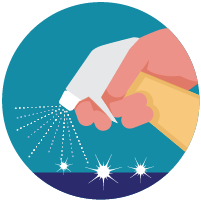
Clean all “high-touch” surfaces everyday
Clean high-touch surfaces in your isolation area (“sick room” and bathroom) every day; let a caregiver clean and disinfect high-touch surfaces in other areas of the home.
- Clean and disinfect: Routinely clean high-touch surfaces in your “sick room” and bathroom. Let someone else clean and disinfect surfaces in common areas, but not your bedroom and bathroom.
- If a caregiver or other person needs to clean and disinfect a sick person’s bedroom or bathroom, they should do so on an as-needed basis. The caregiver/other person should wear a mask and wait as long as possible after the sick person has used the bathroom.
High-touch surfaces include phones, remote controls, counters, tabletops, doorknobs, bathroom fixtures, toilets, keyboards, tablets, and bedside tables.
- Clean and disinfect areas that may have blood, stool, or body fluids on them.
- Household cleaners and disinfectants: Clean the area or item with soap and water or another detergent if it is dirty. Then, use a household disinfectant.
- Be sure to follow the instructions on the label to ensure safe and effective use of the product. Many products recommend keeping the surface wet for several minutes to ensure germs are killed. Many also recommend precautions such as wearing gloves and making sure you have good ventilation during use of the product.
- Most EPA-registered household disinfectants should be effective. A full list of disinfectants can be found here
Complete disinfection guidance
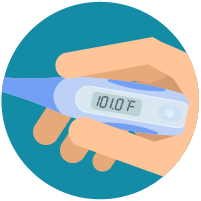
Monitor your symptoms
- Common symptoms of COVID-19 include fever and cough. Trouble breathing is a more serious symptom that means you should get medical attention.
- If you are having trouble breathing, seek medical attention, but call first.
- Call your doctor or emergency room before going in and tell them your symptoms. They will tell you what to do.
- Wear a facemask: If available, put on a facemask before you enter the building. If you can’t put on a facemask, cover your coughs and sneezes. Try to stay at least 6 feet away from other people. This will help protect the people in the office or waiting room.
- Follow care instructions from your healthcare provider and local health department: Your local health authorities may give instructions on checking your symptoms and reporting information.
When to Seek Medical Attention
If you develop emergency warning signs for COVID-19 get medical attention immediately. Emergency warning signs include*:
- Trouble breathing
- Persistent pain or pressure in the chest
- New confusion or inability to arouse
- Bluish lips or face
*This list is not all inclusive. Please consult your medical provider for any other symptoms that are severe or concerning.
Call 911 if you have a medical emergency: If you have a medical emergency and need to call 911, notify the operator that you have or think you might have, COVID-19. If possible, put on a facemask before medical help arrives.
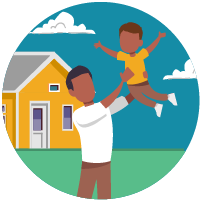
How to discontinue home isolation
People with COVID-19 who have stayed home (home isolated) can stop home isolation under the following conditions:
If you will not have a test to determine if you are still contagious, you can leave home after these three things have happened:
You have had no fever for at least 72 hours (that is three full days of no fever without the use medicine that reduces fevers)
AND
other symptoms have improved (for example, when your cough or shortness of breath have improved)
AND
at least 7 days have passed since your symptoms first appeared
If you will be tested to determine if you are still contagious, you can leave home after these three things have happened:
You no longer have a fever (without the use medicine that reduces fevers)
AND
other symptoms have improved (for example, when your cough or shortness of breath have improved)
AND
you received two negative tests in a row, 24 hours apart. Your doctor will follow CDC guidelines.
In all cases, follow the guidance of your healthcare provider and local health department. The decision to stop home isolation should be made in consultation with your healthcare provider and state and local health departments. Local decisions depend on local circumstances.
Source: Centers for Disease Control and Prevention (CDC)




